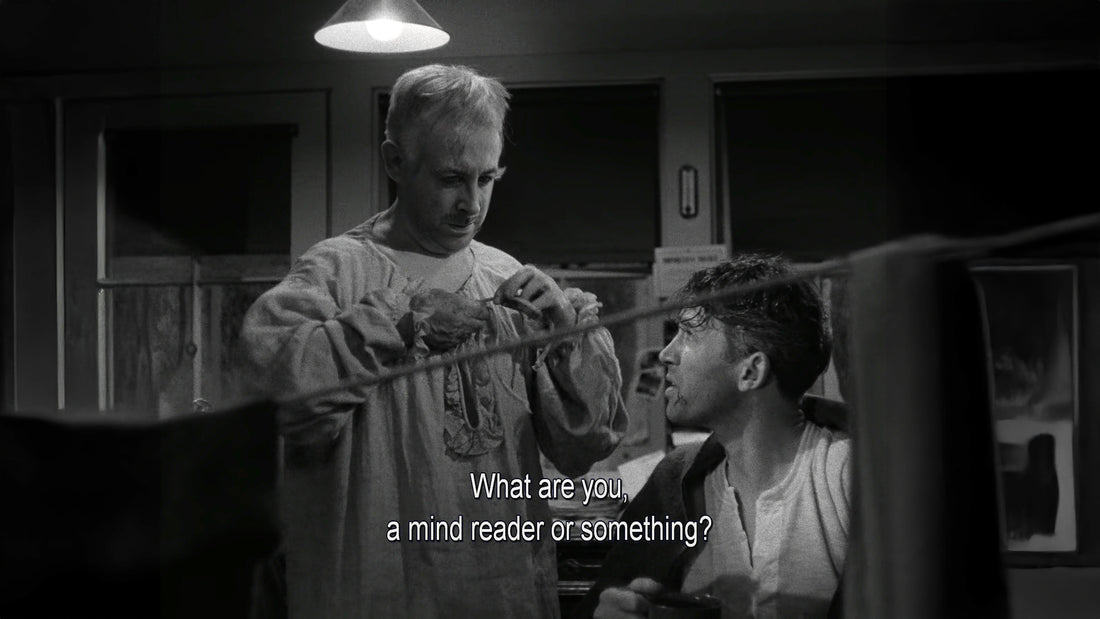
It's A Wonderful Mentalism
I recently discovered "It's a Wonderful Life", nearly 80 years after its release. If you haven’t seen this masterpiece by Frank Capra starring James Stewart, the film tells the story of George Bailey, a man on the brink of despair who, on Christmas Eve, is visited by a guardian angel named Clarence. Clarence shows George just how profoundly his life has impacted others and how the world would have been without him. More than just a tale of redemption, this film is a moving reflection on the value of human lives and the connections that bind us together.
While watching "It's a Wonderful Life", I immediately thought of the angels in "Wings of Desire" by Wim Wenders, another film that deeply impacted me and which I’ve explored in a video on my blog. In Wim Wenders’ film, angels silently observe humans, recording their thoughts and emotions in notebooks. This omniscience, this kind yet distant gaze, echoes Clarence’s role, as he knows everything about George’s life. The angels in "Wings of Desire" and Clarence share a similar mission: to magnify and reveal human reality, sometimes tragic, but always full of beauty and meaning. This idea reminded me of one aspect of mentalism: being a silent and attentive witness, capable of unveiling the invisible.
Another parallel came to mind, this time with "Harvey", a film I’ve also explored in another video. In this film, we once again see James Stewart, this time as a man accompanied by an invisible giant rabbit named Harvey. Like Clarence, Harvey acts as a revelatory entity, shedding light on the true nature of the people around the protagonist. These magical entities—Clarence, the invisible rabbit, or Wenders’ angels—share a common quality: they are there to unveil, amplify, and reveal. This dynamic is something I love to explore in my mentalism work, as these revelations often touch on something profoundly human. This approach also enhances the magical impression of your character.
In "It's a Wonderful Life", several moments struck me as directly translatable into a magic or mentalism routine.
The first example is the rose petals. George’s daughter gives him these petals, a small treasure she cherishes. These petals disappear from George’s pocket in the alternate reality and then reappear when he returns to his own reality, to his immense relief. It’s a deeply magical moment, and this kind of simple effect, using an object charged with emotion, could easily be recreated on stage.
Another memorable moment is Clarence’s ability to know everything about George: his memories, his joys, and his sorrows. This is a direct inspiration for a mentalism effect where the performer divines intimate details about a spectator, recreating the sense of wonder George feels in the presence of Clarence. In fact, George even asks Clarence if he is a "mentalist"!
Finally, the idea of the consequences of our actions resonates strongly in the film. George learns that his absence would have led to the death of his younger brother and, by extension, the death of the soldiers his brother would have saved during the war. This butterfly effect is deeply dramatic and could inspire a stage experience where a spectator realizes that their choices, no matter how insignificant they may seem, can have unexpected consequences for both loved ones and strangers.
Each of these three works—"It's a Wonderful Life", "Wings of Desire", and "Harvey"—explores in its own way the role of magical entities that don’t seek to direct us but rather to show us the richness and complexity of our existence. I invite you to discover or rediscover these films and let their stories inspire your own imagination. Perhaps, like me, you’ll find a new way of seeing the world, and ideas to create experiences for your audience.





